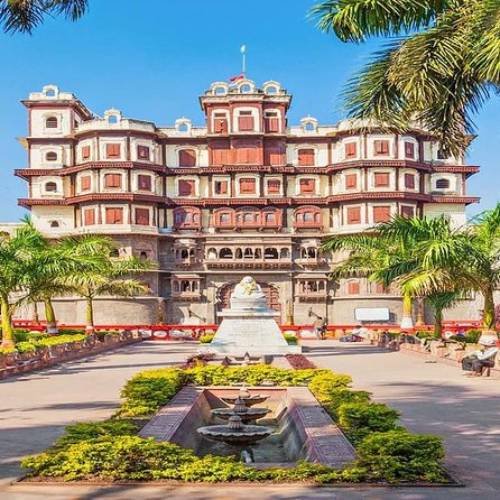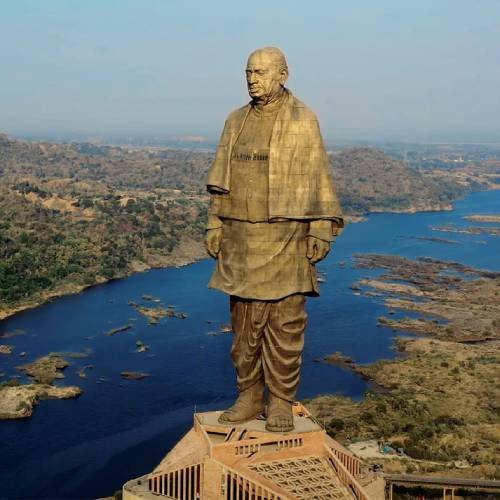Welcome to Madhya Pradesh
Booking Form
Tour Package : All Inclusive
Sightseeing
Hotel Twin Sharing Basis
Food Veg & Non Veg
Transfers in Private Car
Air Tickets
Madhya Pradesh Tour
Madhya Pradesh, a large state in central India, retains landmarks from eras throughout Indian history. Begun in the 10th century, its Hindu and Jain temples at Khajuraho are renowned for their carvings of erotic scenes, most prominently Kandariya Mahadeva, a temple with more than 800 sculptures. The eastern Bandhavgarh and Kanha national parks, noted Bengal tiger sanctuaries, offer guided safaris.
Why Us
Trusted Name in Kashmir Tour Packages
Best B2C Service Provider
Value for Money Packages
Customized Solutions
Personalized Services
Places To Visit


Gwalior
Gwalior is a city in the central Indian state of Madhya Pradesh. It's known for its palaces and temples, including the Sas Bahu Ka Mandir intricately carved Hindu temple. Ancient Gwalior Fort occupies a sandstone plateau overlooking the city and is accessed via a winding road lined with sacred Jain statues. Within the fort’s high walls is the 15th-century Gujari Mahal Palace, now an archaeological museum.


Khajuraho
The Khajuraho Group of Monuments are a group of Hindu and Jain temples in Chhatarpur district, Madhya Pradesh, India. They are about 175 kilometres southeast of Jhansi, 10 kilometres from Khajwa, 9 kilometres from Rajnagar, and 49 kilometres from district headquarter Chhatarpur.The temples are famous for their Nagara-style architectural symbolism and a few erotic sculptures.


Indore
Indore is a city in west-central India. It’s known for the 7-story Rajwada Palace and the Lal Baag Palace, which date back to Indore’s 19th-century Holkar dynasty. The Holkar rulers are honored by a cluster of tombs and cenotaphs at Chhatri Baag. The night market Sarafa Bazar sells street food. East is the Indo-Gothic Gandhi Hall and clock tower. The Jain temple Kanch Mandir has a mirrored mosaic interior.


Bhopal
Bhopal is a city in the central Indian state of Madhya Pradesh. It's one of India’s greenest cities. There are two main lakes, the Upper Lake and the Lower Lake. On the banks of the Upper Lake is Van Vihar National Park, home to tigers, lions and leopards. The State Museum has fossils, paintings and rare Jain sculptures. Taj-ul-Masjid is one of Asia’s largest mosques, with white domes, minarets and a huge courtyard.


Panchmadi
Pachmarhi, also known as Satpura ki Rani, is a hill station in the central Indian state of Madhya Pradesh. Its many waterfalls include Apsara Vihar, with its calm pool, and soaring, single-drop Silver Fall nearby. The Bee Fall tumbles over a jagged rock face to the northwest. Leopards and Indian bison live in Satpura National Park. The ancient Pandav Caves are a group of 5 dwellings cut out of sandstone on a hill.


Satpuda
The Satpura Range is a range of hills in central India. The range rises in eastern Gujarat running east through the border of Maharashtra and Madhya Pradesh and ends in Chhattisgarh. The range parallels the Vindhya Range to the north, and these two east–west ranges divide Indian Subcontinent into the Indo-Gangetic plain of northern India and the Deccan Plateau of the south.


Jabalpur
Jabalpur is a city in the central Indian state of Madhya Pradesh. On a rocky hilltop on the western outskirts of the city is the Madan Mahal Fort, built in 1116. Farther west, the centuries-old Pisanhari Ki Madiya Jain temple offers views of the city. Another Jain temple, Hanumantal Bada Jain Mandir, sits on the shore of a lake in the north. The central Rani Durgavati Museum displays intricately carved sculptures.
Madhya Pradesh Tour Packages


Madhya Pradesh Tour Package
Duration: 3 Nights /4 Days
FLIGHT
Meal
Hotels
Transfer




Flite




Hotels




Meal




Transfer


Gwalior Tour
Package
Duration: 4 Nights / 5 Days
FLIGHT
Meal
Hotels
Transfer




Flite




Hotels




Meal




Transfer


Khajuraho Tour
Package
Duration: 5 Nights / 6 Days
FLIGHT
Meal
Hotels
Transfer




Flite




Hotels




Meal













